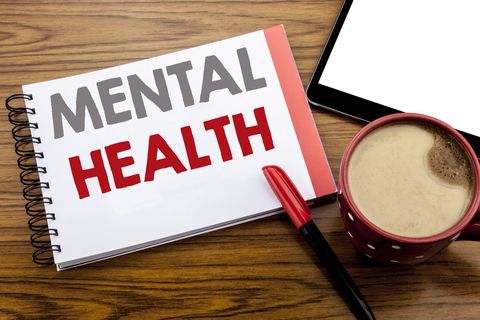 May is Mental Health Month and a good time to think about mental health issues in the workplace. According to the World Health Organization (WHO), depression and anxiety cost an estimated $1 trillion per year in lost productivity worldwide. Employers may be well aware of the need to create a safe workplace by employing safety measures (e.g., using safety equipment such as hardhats for construction workers and disposable nitrile gloves for health care workers). But the need for policies and practices with respect to the mental health of employees may not be properly addressed. Here are some issues to consider.
May is Mental Health Month and a good time to think about mental health issues in the workplace. According to the World Health Organization (WHO), depression and anxiety cost an estimated $1 trillion per year in lost productivity worldwide. Employers may be well aware of the need to create a safe workplace by employing safety measures (e.g., using safety equipment such as hardhats for construction workers and disposable nitrile gloves for health care workers). But the need for policies and practices with respect to the mental health of employees may not be properly addressed. Here are some issues to consider.
What are the workplace risks to mental health?
Happify Health found that in 2018 39% of young employees (ages 18 to 24) had depression, and that this was significantly higher than in 2014. But depression was reported in all age groups. It’s a difficult conversation when it comes to mental health. How much can or should employers do to minimize risks and support good mental health? WHO lists the following as key risks to mental health:
- Inadequate health and safety policies;
- Poor communication and management practices;
- Limited participation in decision-making or low control over one’s area of work;
- Low levels of support for employees;
- Inflexible working hours; and
- Unclear tasks or organizational objectives.
Other stresses to mental health include bullying and psychological harassment (“mobbing”).
What are the strategies for addressing mental health issues?
Obviously the first step in crafting policies for your company is to recognize that there’s a need for being proactive to protect and promote mental health. Workplace Strategies for Mental Health, a site that builds awareness and promotes mental health, offers a variety of suggestions on how to do this. For example, consider offering healthy break activities that support calming, energizing, or relaxing.
Here are some other suggestions:
- Be sure that employees understand how company health insurance can be used for those experiencing mental health issues (e.g., depression).
- Make sure employees experiencing mental health issues take their sick or personal days or other time off as needed.
- Consider posting a list of referrals for mental health resources in the community (e.g., suicide prevention lifelines, domestic abuse resources, support groups).
- Offer a mental health first aid course, which informs employees of how to help someone experiencing a mental health crisis.
Can you terminate a worker with mental illness?
According to the EEOC, it is illegal for an employer to discriminate against a worker because of mental health condition. What’s more, an employer may have to make a reasonable accommodation to help an employee perform and retain the job or be in violation of the Americans with Disabilities Act.
When must mental health issues be reported to OSHA?
Employers (with a small employer exception) are required to report work-related injuries or illnesses to the federal government (there may be state-mandated reporting too). According to OSHA, “mental illness will not be considered work-related unless the employee voluntarily provides the employer with an opinion from a physician or other licensed health care professional with appropriate training and experience (psychiatrist, psychologist, psychiatric nurse practitioner, etc.) stating that the employee has a mental illness that is work-related.”
Final thought
If you want to learn more, check out the Partnership for Workplace Mental Health. Here you’ll find publications, surveys, and employer case examples illustrating successful employer practices.


